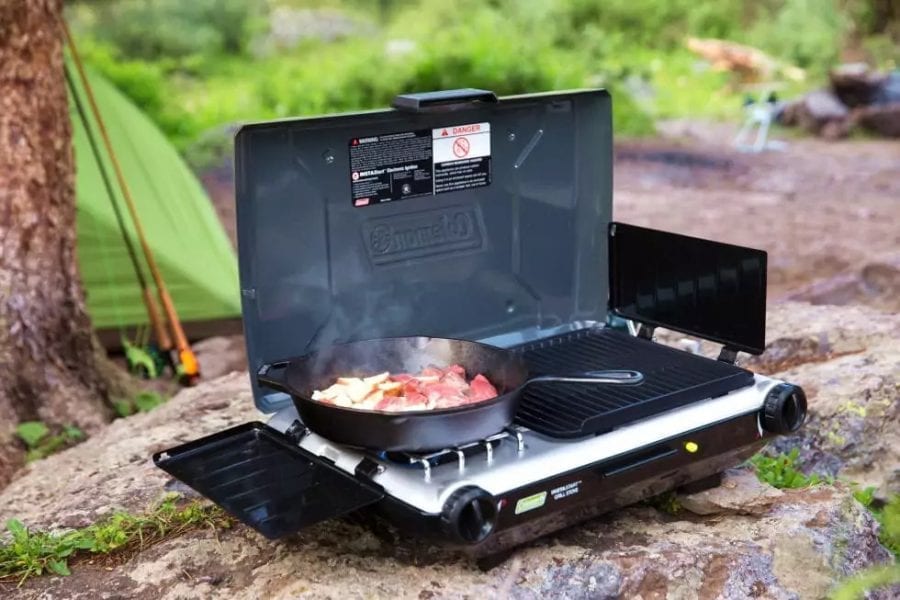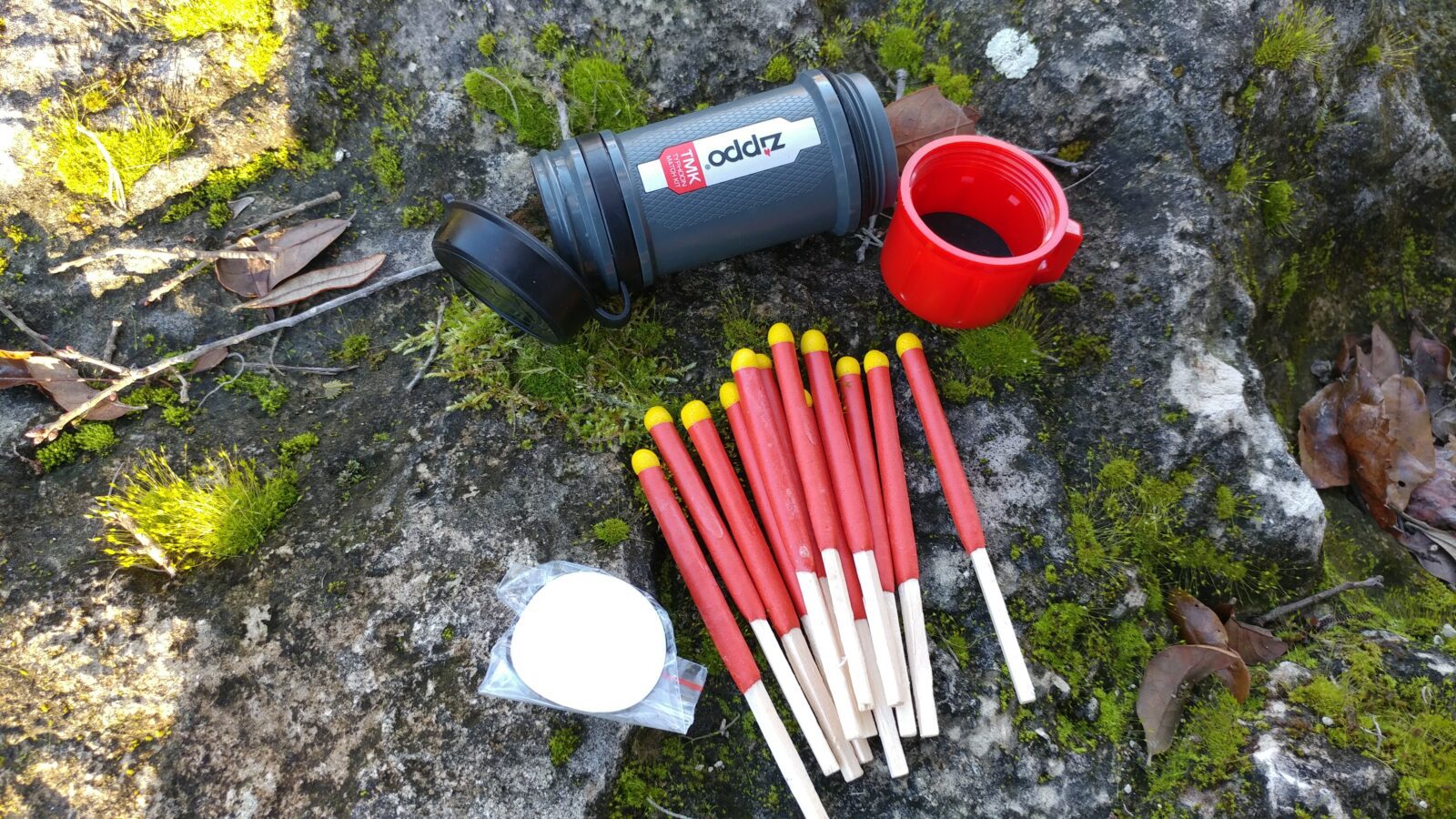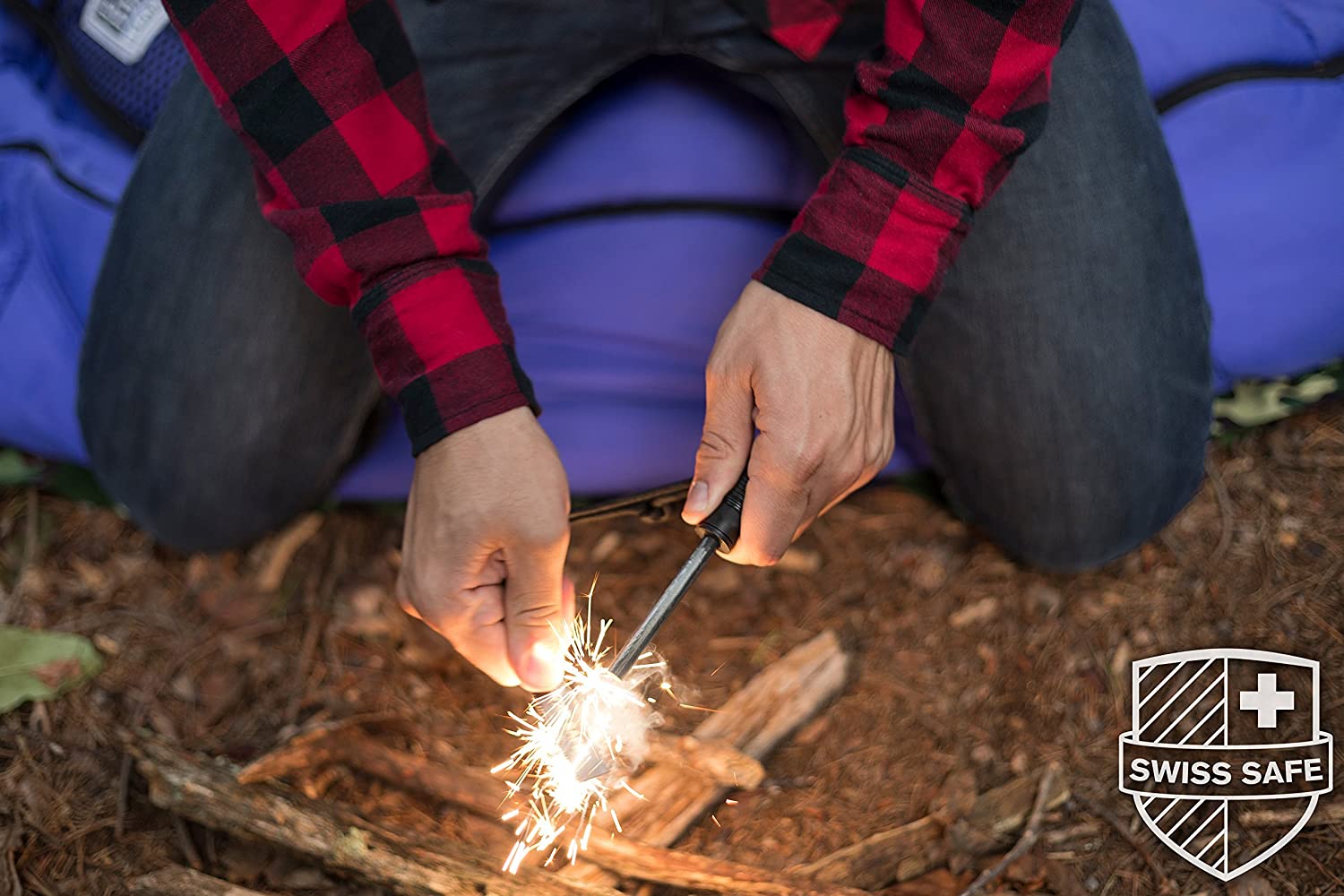If you want to cook up a scrumptious meal on your next camping trip, it’s important that you have the right fuel for the job.
Choosing between propane, butane, isobutane, and white gas, however, can be a confusing and time-consuming task. To help you out, we’ve put together this comparison of the most popular camping fuels.
In this article, we’ll compare propane, butane, isobutane, and white gas so you can decide which one is right for you.
TL:DR
Every fuel type has its advantages, though which one you use depends on your camping style. For cost-effectiveness or winter use, white gas is best.
If you’re going on a light-and-fast backpacking trip, go with isobutane or butane. Or, for fuel efficiency while car camping, propane is your go-to.
Page Contents
Common types of camping stove fuels
There are now four common types of camping stove fuels. Here’s what you need to know about each.
- Propane is a very popular gaseous fuel used for everything from camping stoves to heating homes and powering appliances. It’s generally sold in portable 1lb canisters or larger 20lb containers.
- Butane is another type of gaseous fuel that’s popular among campers. It is very similar to propane from a chemical perspective but is much more flammable, so it burns more efficiently at warmer temperatures. It is sold in smaller canisters (4oz to 16oz) than propane.
- Isobutane. Technically considered an isomer of butane, isobutane is the fuel of choice for many campers. It has an identical molecular structure to butane but is slightly more efficient when used as a cooking fuel in colder temperatures. Like butane, it is also sold in relatively small canisters. However, isobutane is often mixed with propane to create IsoPro, a highly efficient, albeit expensive, fuel for outdoor use.
- White gas. While it’s a liquid, not a gas, white gas (naphtha) is perhaps the most commonly used liquid fuel in the outdoor industry. It is generally sold in 1-quart containers that you can buy in most outdoor gear stores and hardware stores.
Fuel availability
Camping fuel is useless to you on your adventures if you can’t find it at your local store.
In general, camping fuel can be found at outdoor gear stores, hardware stores, and gas stations, though there are exceptions to every rule.
Out of the four most common types of camping fuel, propane is perhaps the most readily available. It’s used for everything from home barbeques and appliances to camping stoves, so you can find it pretty much anywhere.
Additionally, while it’s not as common as propane, white gas is often relatively easy to find in stores. It’s sometimes called Coleman Fuel, so if a retailer sells Coleman equipment, you’ll likely be able to see white gas there, too.
Isobutane is also relatively easy to find in small canisters at most sporting goods stores. Gas stations in some mountain towns might have it in stock, too, but this isn’t always the case.
Finally, pure butane is perhaps the most challenging fuel to find in stores. Since relatively few stoves run solely on pure butane, you’ll be hard-pressed to find it anywhere except in a hardware store and the occasional specialist outdoor store.
Availability (common to rare) : Propane, White gas, Isobutane, Pure butane
Stove compatibility
While fuel availability is its concern, camping stove fuel is also useless if you can’t find a stove compatible with it.
That’s because while there are hundreds of different camping stoves on the market, most operate on a select number of fuel types.
Among stoves designed for car camping, the most popular fuel type is, by far, propane. Indeed, many dual-burner stoves are designed to run on 1lb or 20lb propane tanks. So, in addition to being widely available, you’re also likely to find propane-powered stoves.
Alternatively, most backpacking stoves are designed with either isobutane (or IsoPro) or white gas. Most lightweight stoves are compatible with the smaller isobutane canisters, while larger expedition-style models use white gas.
Butane is quickly falling out of favor in the camping stove world. While it’s still an excellent fuel source, it’s not as universally compatible as isobutane, propane, or white gas. So, you may struggle to find a stove that runs on butane in the first place.
Stove compatibility (universal to specific) : Propane, Isobutane/White gas, Butane
Fuel cost
No one wants to spend more than they have on camping gear, and camping fuels are no exception.
As a general rule, white gas is the most affordable camping fuel. This is partially because it is available as a liquid, so there’s no need for a specialized pressurized container.
After white gas, propane is usually the next best thing in terms of cost-effectiveness. Since you can buy it in large containers, propane is usually the cheapest per pound of all the pressurized fuels. Plus, if you have a 20lb container that you can refill at a hardware store, you’ll save a lot of money on fuel in the long term.
That being said, butane and isobutane are the more expensive options. You can often get butane relatively cheaply at a hardware store, but, as we’ve mentioned, it’s not as widely sold.
Isobutane, on the other hand, tends to be expensive. It is usually sold in small pressurized containers of 4oz to 16oz, so the smaller the container, the more you’ll pay per ounce.
Of course, it’s pretty tricky to compare fuel prices as this varies from place to place, and it’s hard to compare volumes of liquid and gas fuels.
But, as a general guideline, you can expect to pay about $8 to $12 for a 16oz canister of isobutane. For 1 quart (32oz) of white gas, however, you can expect to pay about $7 to $12. That’s way more bang for your buck.
Cost (cheap to expensive) : White gas, Propane, Butane, Isobutane
Burn efficiency
Whether you’re concerned about cutting costs or reducing the amount of fuel you have to carry, the burn efficiency of your camping fuel is essential.
However, comparing the burn efficiency of different camping fuels isn’t straightforward.
While propane, butane, isobutane, and white gas all have very similar heat outputs per pound, the burn efficiency you experience really depends on the stove you use and the environmental conditions around you.
Comparing camping fuels by burn efficiency also depends on what you mean by an efficient burn.
For example, a canister fuel stove on isobutane is likely the most efficient at boiling water (some models can boil 1L of water in under 1 minute). However, those same stoves use way more fuel per minute of cooking than a liquid fuel stove.
So, in terms of the actual cooking time you get with a given quantity of camping fuel, white gas is usually the winner. But if cooking really, really quickly is your goal, either isobutane or butane is the better choice.
Burn efficiency (best to least) : White gas, Isobutane, Butane, Propane
Cold weather tolerance
We’ve already discussed the burn efficiency of different camping fuels. But, it’s important to note that not all camping fuels perform equally as well in colder conditions, like what you’d find in Glacier National Park.
Some types of camping fuels perform particularly poorly in cold temperatures. Fuels in small canisters, like isobutane and propane, are highly inefficient at temperatures below 20ºF (-6.5ºC). Stoves that run on these fuels can fail to turn on at even more frigid temperatures.
That’s because isobutane and butane both have relatively high boiling points of 11ºF to 30ºF (-12ºC to -1ºC) at sea level. Therefore, they become liquid at cold temperatures, which depressurizes their container.
Propane tends to fare better than butane and isobutane at cold temperatures. Since it has a boiling point of -44ºF (-42ºC), propane is the best of the gaseous camping fuels in winter conditions. However, using a propane stove at these temperatures requires a canister that’s very thick to ensure adequate pressurization, which isn’t practical for outdoor use.
Therefore, white gas is your go-to fuel for cold weather. Since it is a liquid, the boiling temperature of white gas isn’t a concern for cold weather trips.
As a result, if you’re planning a winter camping trip to Rocky Mountain National Park or another frigid destination, white gas is best.
Cold tolerance (best to worst) : White gas, Propane, Isobutane, Butane
Size and storage
Last but not least, it’s important to consider the portability of your camping fuel before you buy.
However, as with fuel efficiency, comparing the portability of different camping fuels isn’t straightforward.
For example, white gas is often considered to be the bulkiest and heaviest option because it is a liquid. Meanwhile, isobutane and butane are frequently thought of as highly portable because you can purchase them in small containers that are easy to place in your hiking backpack.
But, on longer camping trips (more than five days), you’ll actually find that the extra weight and bulk of carrying all those individual isobutane containers makes them heavier than the equivalent amount of white gas.
So, for folks on a car camping trip to Yosemite National Park or a short backpacking trip to Grand Teton National Park, isobutane, butane, or propane are likely the more portable choice. When it comes to longer and more remote adventures, though, white gas is a sure bet.
Size (smallest to largest) : Isobutane, Butane, Propane, White gas
Recommended Reads :
Gaby Pilson
Gaby is a professional mountain guide with a master’s degree in outdoor education. She works primarily in the polar regions as an expedition guide, though she can be found hiking, climbing, skiing, sailing, or paddling in some of the world’s most amazing places when not at work.


